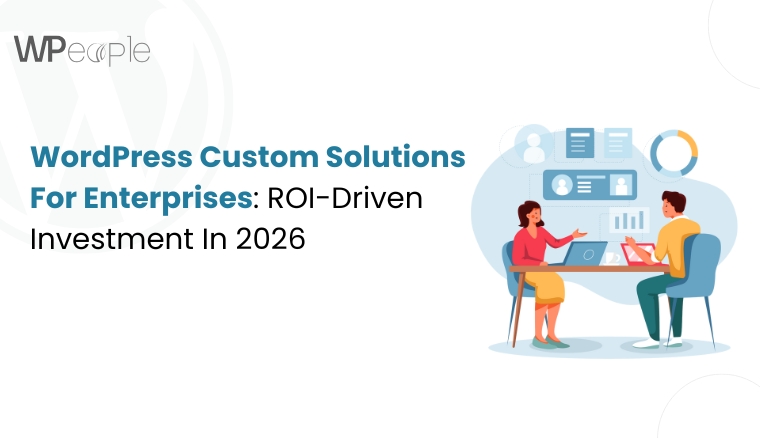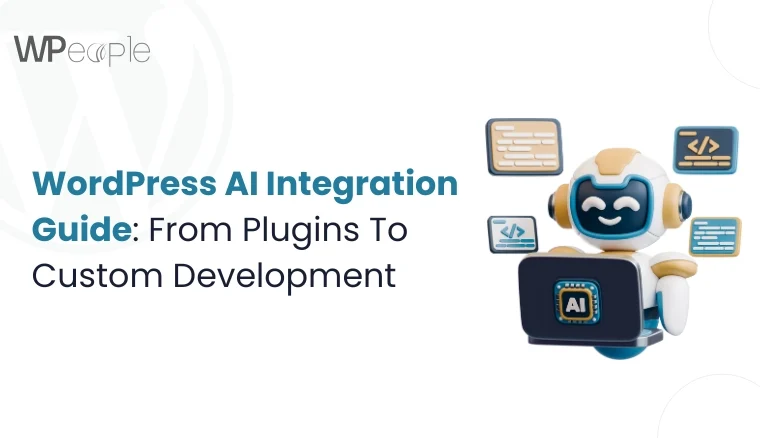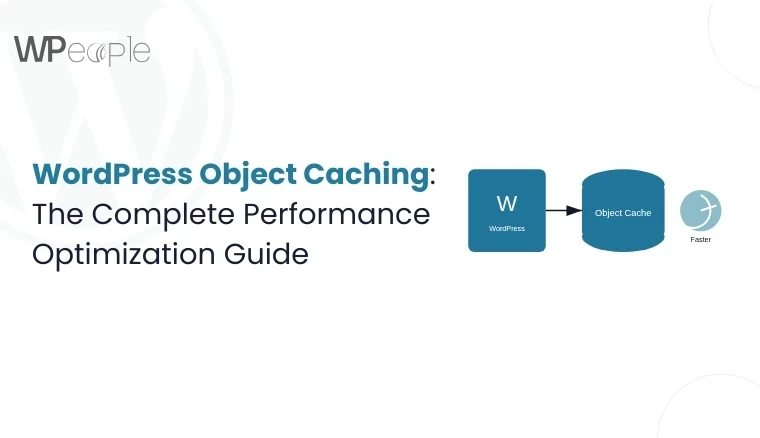
Introduction
If you’re running a WordPress site, learning how to monetize WordPress effectively can turn your passion into a profitable business. While traditional advertising, like display ads and banner spots, has long been a go-to method for website owners, it’s not the only way to generate revenue anymore.
Sure, banner ads can bring in a few dollars, but they often clutter your site and hurt user experience. Fortunately, there are many alternative monetization strategies that are not only more profitable but also better align with your audience’s interests and needs.
In this guide, we’ll dive deep into various strategies to monetize your WordPress site, focusing on smart, modern approaches like WordPress affiliate marketing, selling digital products, membership models, offering services, and boosting revenue through WordPress SEO monetization techniques.
Understanding Your Audience
Before you even think about monetization, you need to know exactly who you’re serving. Your audience isn’t just a group of random visitors—they’re the foundation of your site’s success. Understanding them on a deeper level is the cornerstone of any successful effort to monetize a WordPress site.
If you skip this step, you risk wasting time and energy on strategies that don’t resonate, leaving potential revenue on the table. When you truly understand your audience—what they care about, what challenges they face, and what motivates them—you can create targeted monetization strategies that feel personal, relevant, and irresistible.
Importance of Audience Analysis
Think of audience analysis as building a roadmap. You wouldn’t start a journey without knowing where you’re going, right? Similarly, you can’t expect to sell products, recommend services, or create premium content without a clear understanding of what your audience actually needs and wants.
Audience analysis reveals:
- Demographics: Age, location, income level, education
- Psychographics: Interests, values, lifestyle choices
- Behavioral insights: Browsing habits, purchase triggers, preferred content types
When you know these details, you can tailor your monetization efforts—whether it’s WordPress affiliate marketing, selling online courses, or launching a membership site—to perfectly align with your audience’s desires. This not only increases the chances of conversions but also builds stronger loyalty and trust.
In short: the better you know your audience, the more effective—and profitable—your site will be.
Tools for Audience Research
You don’t have to guess what your audience wants. There are powerful tools available that make audience research easier and more data-driven:
- Google Analytics: A must-have for tracking who visits your site, where they come from, what devices they use, and what pages they interact with most. Set up behavior flow reports and demographic tracking to gain a clearer picture.
- Hotjar: Visualize how users interact with your site through heatmaps, session recordings, and feedback polls. Hotjar helps you see which parts of your pages attract the most attention—and which areas users ignore.
- WPForms Surveys and Polls Addon: Run quick surveys or polls directly on your WordPress site to collect firsthand feedback about your users’ needs, preferences, and pain points.
- Social Media Insights: Platforms like Facebook, Instagram, and Twitter offer valuable analytics on audience interests and behavior. These insights can guide what type of content or products might perform best.
By combining insights from these tools, you can develop a well-rounded understanding of your audience and their journey on your site.
Tailoring Monetization Strategies to Audience Needs
Once you’ve gathered and analyzed your audience data, the next step is personalization. Tailor your monetization strategies to fit the specific needs, preferences, and behaviors you’ve uncovered.
Here’s how you can align your monetization with your audience:
- Affiliate Products: If your audience frequently searches for tool reviews or product comparisons, integrating WordPress affiliate marketing can be highly effective. Promote only products that are genuinely relevant to your readers.
- Digital Products: If you notice that your audience craves in-depth learning, consider creating and selling digital products like eBooks, templates, or online courses.
- Services: If visitors are looking for hands-on help or expert advice, offering coaching, consulting, or done-for-you services can be a smart move.
- Membership Sites: If your audience values community and exclusive content, setting up a membership model could generate steady recurring income.
- Sponsored Content: For audiences that trust your recommendations, sponsored posts and brand partnerships (carefully chosen) can add value without compromising authenticity.
Always test and validate your monetization strategies. What works for one audience might not work for another. Use A/B testing, customer feedback, and analytics to continuously refine your approach.
Ultimately, your monetization success depends on building genuine value for your audience. By focusing on their needs first, you position your site not just to earn more revenue, but to create lasting relationships that fuel long-term growth.
Affiliate Marketing
One of the most popular and effective ways to monetize WordPress sites today is through WordPress affiliate marketing. It’s a versatile strategy that can be adapted to nearly any niche, making it an excellent choice for bloggers, educators, influencers, and business owners alike.
Done correctly, affiliate marketing can transform your WordPress site from a content hub into a steady stream of passive income—allowing you to earn money even while you sleep.
Definition and Benefits of Affiliate Marketing
Affiliate marketing is a performance-based revenue model where you earn a commission by promoting other companies’ products or services. When your audience clicks on your special affiliate link and completes a purchase (or another desired action like signing up), you get paid a commission.
Key benefits of affiliate marketing include:
- Low risk and low cost: You don’t need to invest in creating your own product, managing inventory, or dealing with customer service.
- Flexibility: You can promote multiple products and services from different companies, diversifying your income streams.
- Scalability: As your site traffic grows, so does your potential to earn higher commissions without significantly increasing your workload.
- Passive income potential: Once you’ve set up your affiliate content, it can continue generating revenue over time with minimal maintenance.
- Alignment with user intent: If done well, recommending products that solve real problems for your audience can actually enhance their experience on your site.
Whether you’re a tech blogger recommending hosting services or a fitness coach sharing your favorite workout gear, WordPress affiliate marketing can fit naturally into your content strategy.
How to Choose the Right Affiliate Programs
Selecting the right affiliate programs is critical to building a profitable and trustworthy affiliate marketing strategy. Here’s what you should consider:
- Relevance: Only promote products or services that are highly relevant to your audience. Think about what your readers are already searching for or need help with. Promoting irrelevant products will quickly erode trust and engagement.
- Commission Rates: Different affiliate programs offer different payouts. Some, like digital products and SaaS tools, offer high commissions (sometimes up to 50%), while others, like Amazon Associates, offer lower rates but with the advantage of broad product selection and brand recognition.
- Credibility and Quality: Always recommend high-quality products from reputable brands. Your reputation is on the line—if your readers have a bad experience with a product you recommended, it reflects poorly on your brand.
Some popular affiliate networks to start with include:
- ShareASale: A large network featuring a wide variety of merchants across different industries.
- CJ Affiliate (formerly Commission Junction): Excellent for established brands and diverse niches.
- Amazon Associates: Ideal for beginner affiliates thanks to its massive inventory, though commissions are relatively low.
WordPress-specific affiliate opportunities are also abundant, especially in tech and online business niches. Consider promoting:
- WordPress themes (e.g., Astra, Divi, GeneratePress)
- Hosting services (e.g., Bluehost, SiteGround, WP Engine)
- WordPress plugins (e.g., Elementor, WP Rocket, Yoast SEO)
These options naturally tie into many WordPress-related blogs and audiences.
Best Practices for Promoting Affiliate Products on WordPress
Successful affiliate marketing isn’t about spamming your audience with links. It’s about providing genuine value, building trust, and recommending products that solve real problems. Here are some best practices to follow:
- Write In-depth Product Reviews: Go beyond surface-level descriptions. Share your personal experience with the product, its pros and cons, and real use-case examples. Authentic, honest reviews drive higher conversions.
- Create Comparison Posts: People often search for “Product A vs. Product B” when they’re close to making a purchase decision. Creating detailed comparison articles can help capture high-intent traffic and drive more affiliate sales.
- Add Banners and Contextual Links: Strategically place affiliate banners and links within your blog posts. But be cautious—your site should not look like an ad farm. Use banners sparingly and ensure they complement your content naturally.
- Use Disclosure Statements: Always disclose your affiliate relationships clearly. It’s not just ethical—it’s a legal requirement in many countries (such as under the FTC in the United States). A simple statement like “This post may contain affiliate links. I may earn a commission if you make a purchase through my links, at no extra cost to you.” works well.
- Leverage Affiliate Link Management Tools: Managing dozens or hundreds of affiliate links manually can be messy. Tools like ThirstyAffiliates or Pretty Links allow you to cloak, manage, and organize your affiliate links, making them look cleaner (e.g., yoursite.com/go/productname) and easier to track.
- Focus on Evergreen Content: Create content that remains relevant over time—like how-to guides, tutorials, and product roundups. This way, your affiliate links continue to generate passive income long after the content is published.
- Analyze and Optimize Performance: Use analytics to track which posts and links generate the most clicks and conversions. Over time, refine your strategy based on what’s working best.
Selling Digital Products
Another powerful and scalable strategy to monetize a WordPress site is by selling digital products. Unlike physical goods, digital products offer the advantage of low overhead, no shipping logistics, and the ability to serve a global audience instantly. Plus, once you create a digital product, you can sell it repeatedly without additional production costs—making it a highly profitable way to build a sustainable online business.
If you’re looking for ways to diversify your income streams beyond WordPress affiliate marketing, launching your own digital products is an excellent next step.
Types of Digital Products to Sell
One of the best parts about selling digital products is the sheer variety of options you can create, depending on your niche, expertise, and audience needs. Here are some popular digital product ideas:
- eBooks: If you have specialized knowledge, experience, or insights, packaging that information into an eBook is a great way to share it with your audience. eBooks are relatively quick to create and can be sold individually or bundled with other products for more value.
- Online Courses: Online learning continues to explode in popularity. If you can teach a skill—whether it’s web design, photography, marketing, or even mindfulness—you can build a structured course complete with videos, worksheets, and quizzes. Platforms like LearnDash or LifterLMS integrate seamlessly with WordPress to help you deliver professional-grade learning experiences.
- Printable Templates: Planners, checklists, workbooks, habit trackers, business templates—printables are highly attractive for busy audiences who crave organization and productivity. Design simple, high-value templates using tools like Canva or Adobe Illustrator.
- Software or WordPress Plugins: If you have technical skills, developing software tools or niche WordPress plugins can be incredibly lucrative. This could range from simple website calculators to full-featured apps designed to solve specific problems for your audience.
- Graphics and Design Assets: If you’re a graphic designer, you can sell stock photos, icons, fonts, and other digital design elements, especially if you target niches like bloggers, marketers, or small business owners.
Setting up an Online Store on WordPress
You don’t need a complex setup to start selling digital products. WordPress offers several powerful plugins that make creating an online store straightforward and professional:
- WooCommerce: While famous for physical product stores, WooCommerce extensions allow you to sell digital products. It’s highly customizable, offers secure payment processing, and integrates easily with a wide range of WordPress themes and plugins.
- Easy Digital Downloads (EDD): Designed specifically for selling digital products, EDD offers a streamlined experience. It includes everything you need to list products, manage customers, deliver downloads securely, and track sales—all within a user-friendly dashboard.
Both platforms support key e-commerce functionalities like:
- Payment gateways (Stripe, PayPal, credit cards)
- Download protection (so only paying customers get access)
- Coupon codes and discount management
- Customer management and sales reporting
Additionally, integrating email marketing services like Mailchimp, ConvertKit, or FluentCRM with your store helps you nurture customer relationships and drive repeat sales.
Pro Tip: Make sure your WordPress theme is compatible with WooCommerce or EDD to ensure a seamless customer experience across desktop and mobile devices.
Marketing Strategies for Digital Products
Creating an amazing digital product is just the first step. To succeed in monetizing your WordPress site, you’ll also need an effective marketing strategy to drive traffic and boost conversions. Here’s how:
- Offer Lead Magnets to Build an Email List: Create free, valuable resources (like a free checklist, mini-course, or eBook sample) to entice visitors to join your email list. Once they’re on your list, you can nurture them with helpful content and introduce them to your paid products.
- Use Upsells and Cross-Sells: When someone purchases a product, offer them a complementary upgrade or bundle at checkout. For example, if they buy an eBook, you might offer a related video workshop at a discounted price. This strategy can significantly increase your average order value.
- Run Limited-Time Promotions and Flash Sales: Scarcity and urgency are powerful psychological triggers. Promote limited-time discounts or exclusive offers to encourage immediate action. Plugins like WooCommerce Sales Countdown or EDD Discount Codes make it easy to manage time-sensitive promotions.
- Leverage Social Proof: Customer reviews, testimonials, and user-generated content can dramatically improve your conversion rates. Display reviews prominently on your product pages. If you’re just starting out, offer your product at a discount to a few beta users in exchange for honest feedback and testimonials.
- Content Marketing: Create blog posts, podcasts, videos, and social media content that educates your audience around the topic of your digital product. For instance, if you’re selling a productivity planner, blog about time management tips and naturally weave in mentions of your product.
- Affiliate Partnerships: Consider creating an affiliate program where others can promote your digital products for a commission. This strategy not only expands your reach but also taps into audiences you may not have accessed otherwise.
Membership and Subscription Models
Building a membership site is one of the most powerful long-term strategies to monetize a WordPress site. Unlike one-off sales or passive affiliate commissions, a membership or subscription model allows you to generate predictable, recurring income month after month.
By offering premium content, exclusive resources, and a sense of community, you can create a valuable ecosystem where your audience is willing to pay for ongoing access.
Overview of Membership Sites
At its core, a membership site is a gated area of your website where only registered, paying users can access exclusive content or benefits. Instead of giving away all your valuable content for free, you strategically reserve your highest-value material—whether it’s in-depth tutorials, online courses, downloadable resources, or private community forums—for your paying members.
Some popular types of membership sites include:
- Educational hubs: Offer structured learning programs or ongoing training sessions.
- Content libraries: Provide access to archives of eBooks, templates, videos, podcasts, or design assets.
- Exclusive communities: Build forums, mastermind groups, or Slack-style groups where members can network, ask questions, and learn from each other.
- Service-based memberships: Offer regular coaching calls, mentorship, or done-for-you services on a subscription basis.
Membership sites allow you to establish yourself as an authority in your niche while building deeper relationships with your audience—ultimately leading to more loyalty and higher lifetime customer value.
Benefits of Offering Premium Content
There are several compelling reasons why membership models are a smart way to monetize WordPress:
- Predictable Recurring Revenue: Instead of chasing individual sales every month, you have steady, recurring income from memberships. This makes financial planning and business growth much easier and more sustainable.
- Stronger Community Engagement: Paying members are typically more invested and engaged. This creates a thriving community atmosphere, where members help each other, increase retention rates, and even become brand advocates.
- Higher Perceived Value: Exclusive content and special access elevate the perceived value of your brand. People often value what they pay for more highly than what’s free, leading to a stronger reputation and a more premium positioning for your business.
- Scalability: Once your membership infrastructure is set up, adding new content or members requires minimal additional work, making it a scalable way to grow your online income.
- Upselling Opportunities: With an active membership base, you have a warm audience to whom you can upsell higher-ticket products, coaching, consultations, or live events.
Pro Tip: Content is important, but don’t underestimate the value of community. Many members stay subscribed not just for the resources, but for the connection and networking opportunities.
Tools and Plugins for Creating Membership Sites
Thanks to a wide range of WordPress monetization plugins, you don’t have to be a coding expert to build a professional membership site. Some of the best options include:
- MemberPress: Often regarded as the gold standard for WordPress membership plugins, MemberPress offers a full suite of features. You can easily create unlimited membership levels, restrict access to content, drip content over time, integrate payment gateways like Stripe and PayPal, and even build online courses with its built-in LMS features.
- Restrict Content Pro: Lightweight but powerful, Restrict Content Pro is perfect if you want an intuitive, easy-to-use solution. It lets you lock down premium content, manage subscribers, create discount codes, and integrate with popular email marketing services.
- Paid Memberships Pro: A highly flexible and customizable plugin ideal for complex membership models. It supports multiple membership tiers, detailed reporting, recurring billing, and dozens of add-ons for integrations with WooCommerce, BuddyPress, and other tools.
Each of these plugins offers robust features for:
- Payment Processing: Accept recurring payments securely via credit cards, PayPal, Stripe, and more.
- Content Restriction: Lock posts, pages, downloads, forums, or any part of your site behind a paywall.
- Member Management: Track active subscriptions, renewals, cancellations, and user behavior easily.
- Drip Content: Gradually release content to members over time to keep them engaged and reduce churn.
- Discount Coupons: Create special promotions or membership discounts to boost sales.
Sponsored Content and Partnerships
Sponsored content and brand partnerships offer another highly profitable way to monetize your WordPress site—especially once you’ve built a strong, engaged audience. Unlike traditional banner ads, which can be disruptive and pay relatively little, sponsored posts allow you to integrate promotions naturally into your content while providing real value to your readers.
Done correctly, sponsorships can become a major revenue stream and even lead to long-term brand collaborations.
Understanding Sponsored Posts
Sponsored posts are pieces of content, like blog articles, reviews, videos, or social media posts, created specifically to highlight a brand’s product or service. In exchange, the brand pays you a flat fee, provides free products, or even offers a combination of both.
The key difference between traditional advertising and sponsored content is authenticity. Sponsored posts are designed to fit seamlessly into your existing content style, ensuring they feel organic rather than “salesy” or disruptive.
Some common examples of sponsored content include:
- A blog post reviewing a brand’s new product
- A tutorial showcasing how to use a company’s tool or service
- A lifestyle article that naturally incorporates a brand’s offering
- A video unboxing or demo posted on your site or YouTube channel
Well-executed sponsored posts can be a win-win: your readers discover helpful products, the brand gains exposure, and you earn a steady income—all while maintaining trust and credibility with your audience.
How to Approach Brands for Partnerships
When you’re ready to seek sponsorship opportunities, it’s important to approach brands professionally. Here’s how you can do it effectively:
- Build a Strong Media Kit: A media kit is like your site’s resume. It should include key metrics such as your monthly traffic, social media following, email subscriber numbers, audience demographics, engagement rates, previous successful brand collaborations, and testimonials (if available). Tools like Canva offer great templates to create a polished, professional media kit quickly.
- Pitch Brands that Align with Your Niche: Focus on companies whose products or services match your site’s topic and audience interests. For example, if you run a food blog, partnering with kitchen gadget brands, meal prep services, or nutrition companies makes sense. Irrelevant partnerships can alienate your readers and hurt your brand credibility.
- Personalize Your Outreach: When emailing brands, avoid generic templates. Personalize your message by showing that you understand their brand, explaining why your audience is a great fit, and proposing specific content ideas. Brands appreciate when creators do their homework.
- Be Clear About Deliverables, Pricing, and Expectations: Specify what the brand will receive (e.g., one sponsored blog post, two Instagram posts, one email mention) and the associated costs. Include timelines, revision policies, and payment terms to prevent misunderstandings later on.
Pro Tip: If you’re just starting out, be open to offering discounted rates or additional deliverables to build your sponsorship portfolio. As your site grows, you can command higher fees.
Best Practices for Maintaining Authenticity
Nothing is more important than maintaining the trust of your audience when working with sponsors. Here’s how to stay authentic and ensure your sponsorships strengthen rather than weaken your brand:
- Always Prioritize Audience Trust: Your readers come first. Only promote products and services that you genuinely believe will help or appeal to your audience. A single poorly chosen sponsorship can damage your credibility and lead to lost followers or customers.
- Be Transparent About Sponsorships: Clearly disclose when content is sponsored, using labels like “Sponsored Post,” “In Partnership With [Brand],” or “This post contains affiliate links.” Transparency is not just a best practice—it’s required by law in many countries, including FTC regulations in the U.S.
- Share Honest, Balanced Reviews: Sponsored content doesn’t have to be blindly positive. Share both the pros and any minor cons, so your audience knows you’re giving an honest opinion. This authenticity often makes sponsored posts more effective because readers trust your judgment.
- Focus on Value-First Content: Sponsored content should still educate, entertain, or inspire your audience. Avoid creating posts that feel like pure advertisements. Instead, integrate the sponsor naturally within helpful, engaging content that your readers would love even if there were no sponsorship involved.
- Limit Sponsored Content Frequency: If every other post on your site is sponsored, your audience might start feeling “sold to” rather than served. Balance sponsored posts with organic, non-sponsored content to maintain your brand’s authenticity.
Offering Services
Many WordPress site owners forget they can also offer personal services.
Identifying Services to Offer
Depending on your expertise, you might offer:
- Consulting
- Coaching
- Freelance writing
- Web design and development
Creating a Service Page on Your WordPress Site
Your service page should clearly outline:
- What you offer
- Who you help
- How people can hire you (with a strong call-to-action)
Use booking plugins like Amelia or Simply Schedule Appointments to make scheduling easy.
Marketing Your Services Effectively
Promote your services via blog content, guest posting, email newsletters, and social media. Client testimonials and case studies can build powerful social proof.
Utilizing WordPress SEO for Monetization
WordPress SEO monetization is crucial if you want to attract more traffic—and more income.
Importance of SEO in Driving Traffic
No matter how good your products or services are, they won’t sell if no one sees them. Good SEO ensures your site ranks higher in search results, bringing in organic traffic without paid ads.
SEO Strategies to Enhance Visibility
- Use keyword-rich, engaging titles.
- Optimize on-page SEO: meta descriptions, headings, internal links.
- Focus on creating long-form, valuable content.
- Build high-quality backlinks.
- Use SEO plugins to optimize your content
Plugins like Yoast SEO and Rank Math are some of the best WordPress monetization plugins because they help optimize every page for search engines.
How Improved SEO Can Lead to Increased Revenue
More traffic = more opportunities for sales, affiliate clicks, memberships, and service inquiries. WordPress SEO monetization is a compounding strategy that builds momentum over time.
Exploring Alternative Revenue Streams
There’s no need to limit yourself to just one way to monetize WordPress.
Donations and Crowdfunding
If you create valuable free content, consider adding a donation button with GiveWP or running a crowdfunding campaign for special projects.
Selling Physical Products
With WooCommerce, you can sell physical goods, merchandise, or even dropshipping products.
Creating a Podcast or Video Content for Monetization
Podcasts and YouTube channels can become powerful lead generators. Monetize them through sponsorships, ads, or premium content memberships linked to your WordPress site.
Conclusion
Learning how to monetize WordPress isn’t just about slapping up a few ads and hoping for the best. It’s about strategically building multiple income streams based on a deep understanding of your audience. Whether you choose WordPress affiliate marketing, selling digital products, launching a membership site, offering services, or improving your WordPress SEO monetization, the key is consistency and authenticity.
Use the best WordPress monetization plugins to streamline your operations, stay true to your audience, and watch your WordPress site transform from a simple blog into a thriving online business.
Consult with Our WordPress Experts On:
- WooCommerce Store
- Plugin Development
- Support & maintenance




